Everything you need to know about cooking freekeh, a delicious grain (or cereal, as some refer) packed with protein, fiber, and healthy fats!
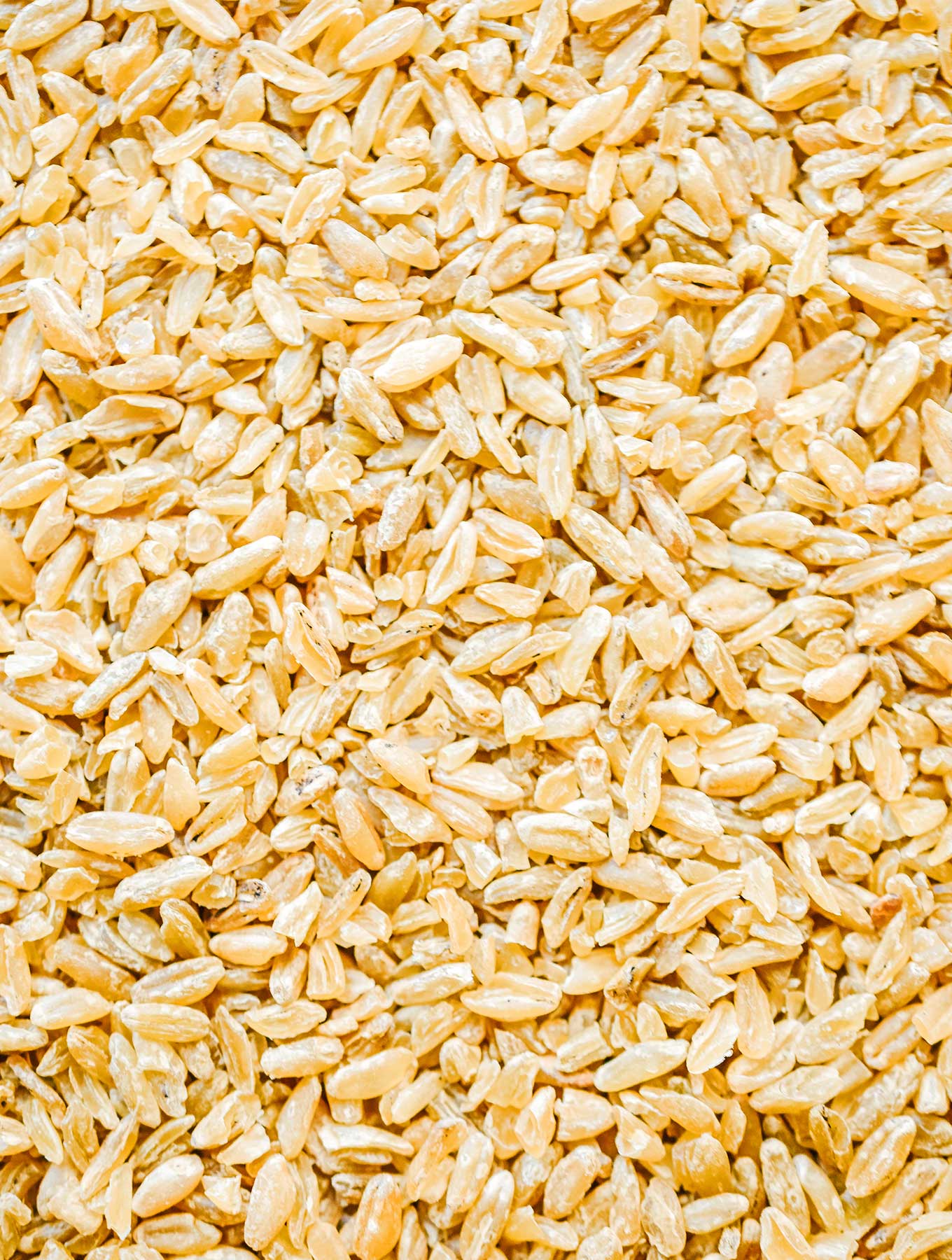
What is freekeh?
Freekeh is a grain that is derived from North African and Eastern Mediterranean/West Asian regions (home to the durum wheat that the grain comes from).
A whole grain, this little nutrient powerhouse (more on that in a sec) comes from smoking durum wheat grains. After smoking, the grains are “polished,” which is a process that removes the shells and reveals the freekeh grains’ color and texture.
If you’re picturing brown whole grain rice (or perhaps bulgur, farro, or sorghum), you’re in the right boat! Freekeh could be considered to be in the same category as those grains, but it’s a bit different in taste. You may find that it has more of an earthy flavor, sort of similar to how nuts taste earthy.
Does freekeh contain gluten?
Unlike quinoa, freekeh is not gluten-free. It is made from durum wheat grains, which contain gluten.
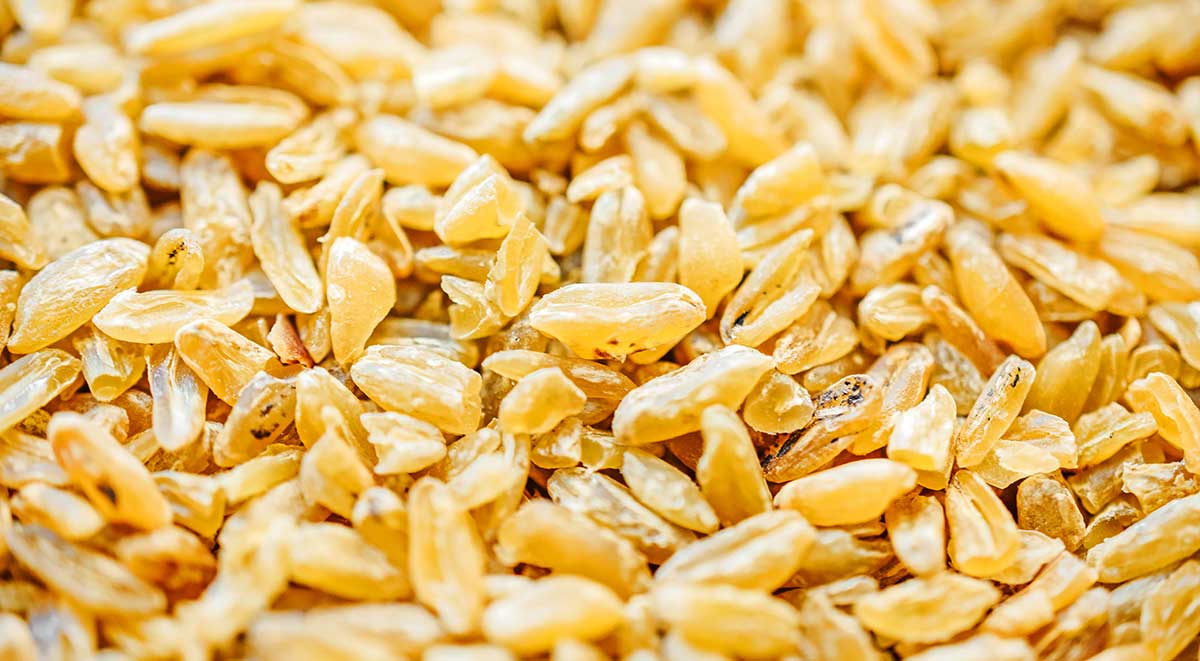
Where to buy freekeh
If your grocery store carries freekeh, you’re likely to find it on the aisle with the rice, quinoa, and grains. Popular brands include Ziyad, Earthly Choice, Bob’s Red Mill, and Fire Grain. If you can’t locate it in-store, you can definitely find it online!
Variations of freekeh
Freekeh can come in a couple different forms:
- Whole: Whole freekeh is… whole! With this version you’ll get the full grains. The taste is the same, but the texture will be a bit smoother than the alternative.
- Cracked: Cracked freekah, on the other hand, is simply whole freekeh broken up into smaller pieces. The texture is a bit more coarse. The benefit of cracked freekeh is that it cooks faster!
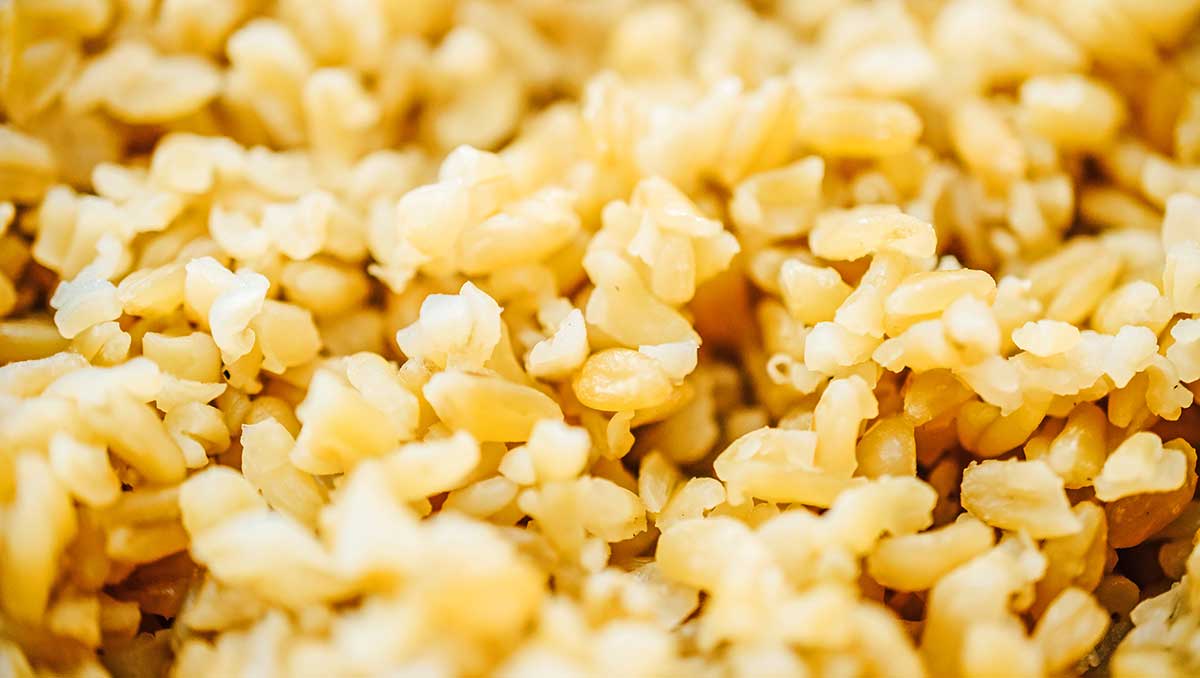
The benefits of freekeh
There’s no other way to say it: freekeh is a top tier grain. Because it’s harvested when the grains are “young,” it contains so many more nutrients than it would if harvested at a later time. Each serving provides healthy amounts of:
- Protein
- Fiber
- Carbohydrates
- Iron
- Fats
It’s lower in calories and carbs than both brown rice and quinoa, and contains more protein than brown rice (and the same amount as quinoa!).
Filled with prebiotics and antioxidants, this grain is great for aiding in gut and hearth health and is noted for being a fantastic, lower-glycemic option for those who wish to monitor their blood sugar.
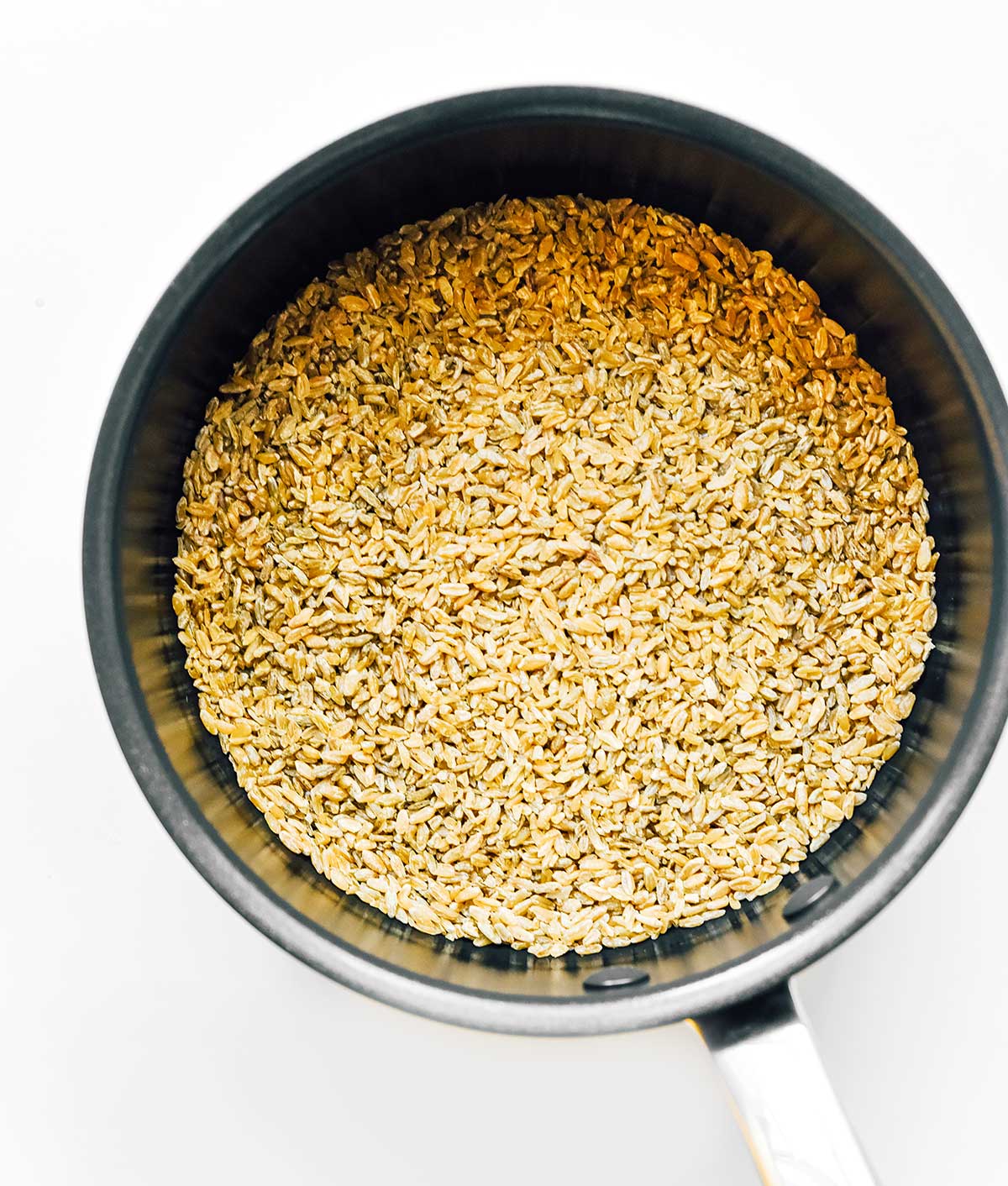
How to cook freekeh
Freekeh is cooked the same way as rice or quinoa. Take the grains, add the liquid, and cook on the stove! To make freekeh, you will need:
- 1 cup of grains
- 2 ½ cups of water or broth (unless the package lists a different amount)
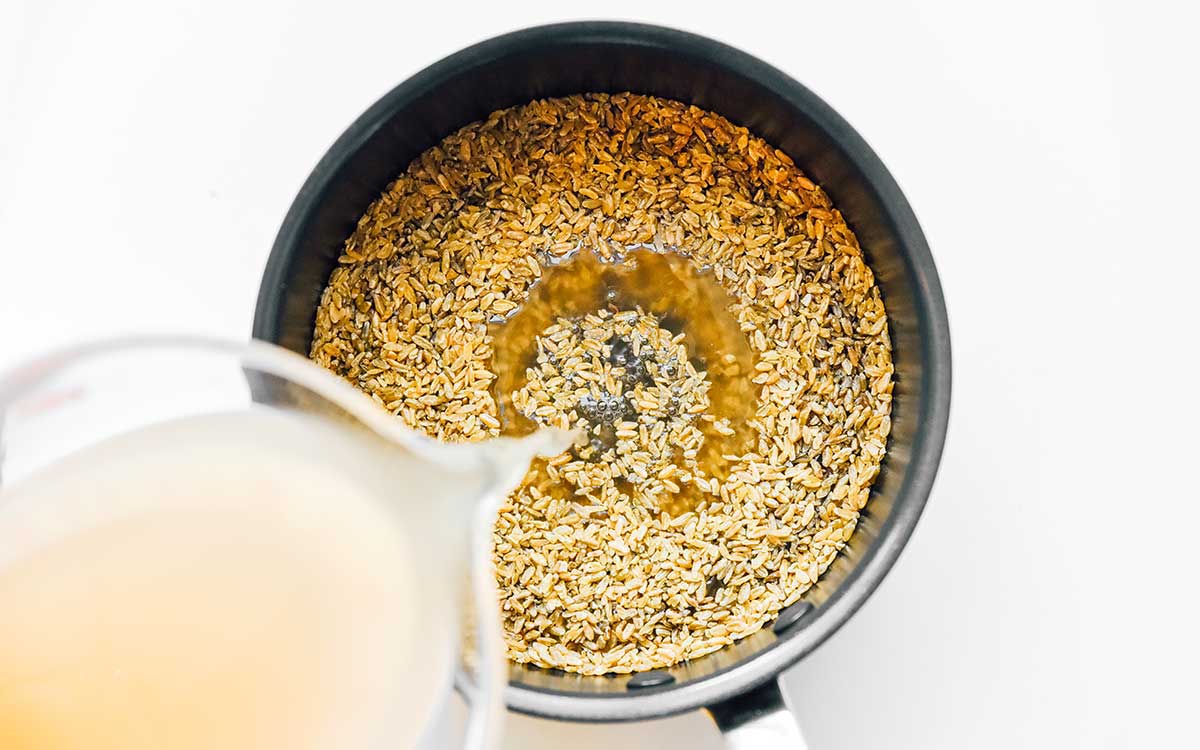
- Combine the freekeh and water (or broth) in a large pot. Bring to a boil, and then reduce to a simmer. Cover and let cook for 10 minutes.
- Like with rice or quinoa, let the mix stand, covered, for 5 minutes. Drain the excess moisture from the pot, and then fluff the freekeh with a fork.
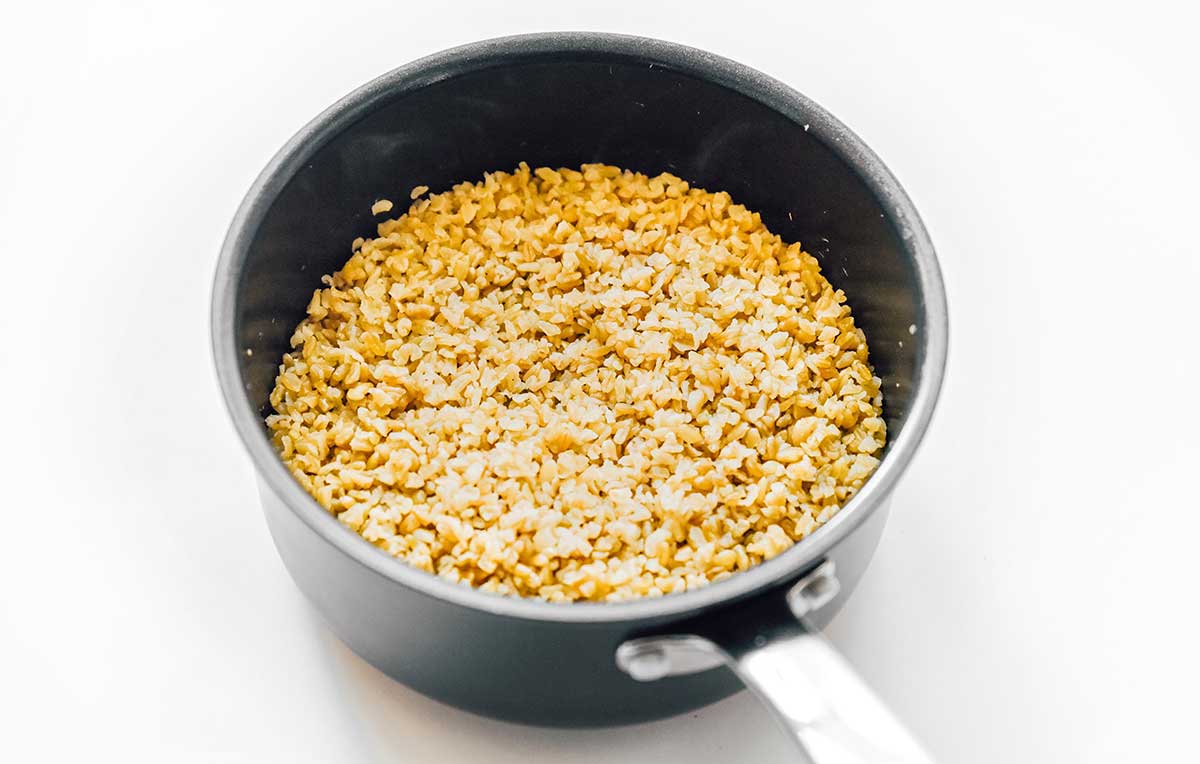
How to store freekeh
Uncooked: Dry freekeh can be stored in the pantry. Keep it in a well-sealed, airtight container in order to preserve the freshness. When uncooked and stored properly, it will last for while!
Cooked: On the other hand, cooked freekeh should be stored in the refrigerator, again in an airtight container. Eat it up within 5 days.
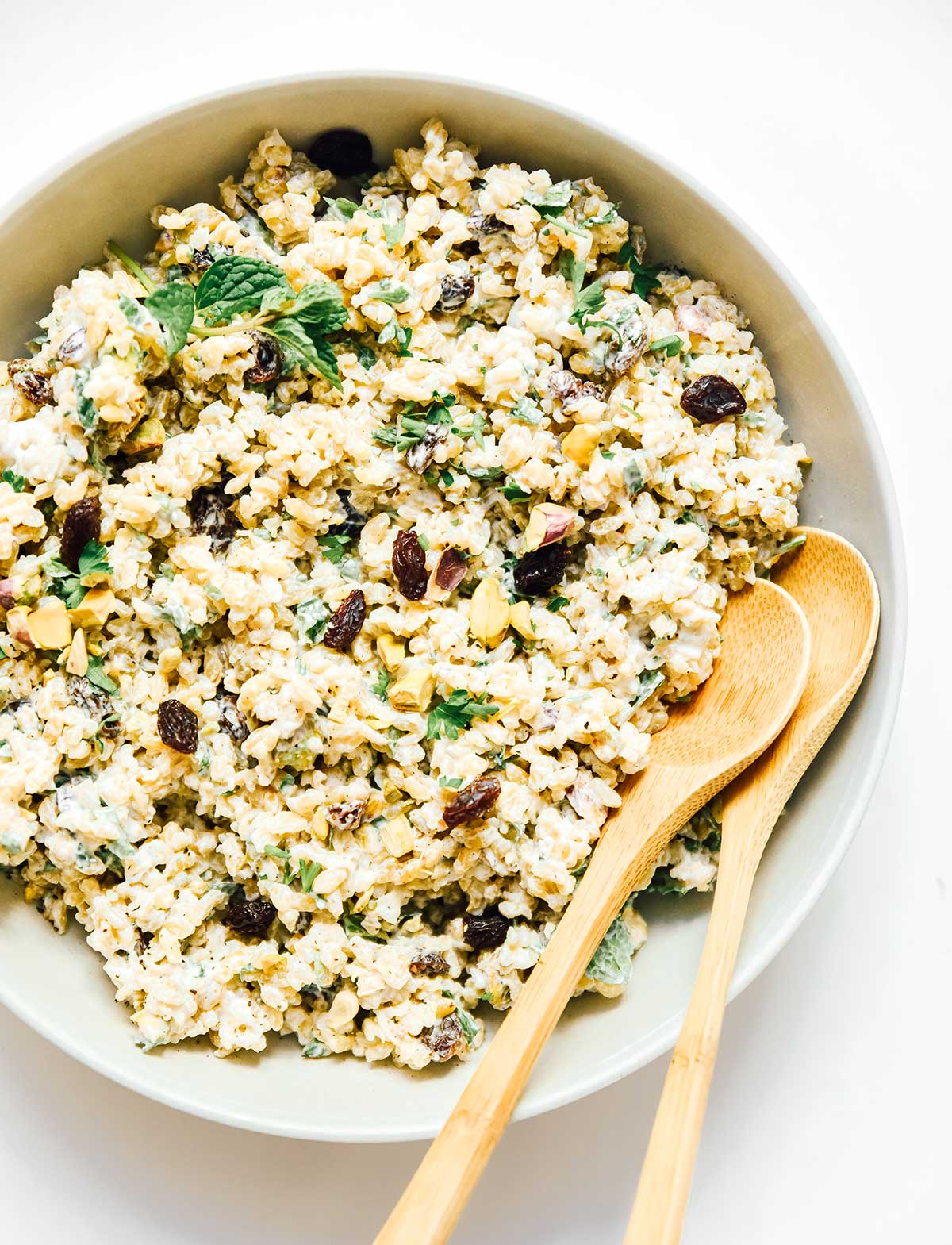
How to serve freekeh
Freekeh is a great grain because not only does it taste fantastic, it can be served up so many different ways! It can essentially be used wherever you’d use quinoa or rice: in salad or soup, with veggies, etc. Try it in place of bulgur in tabbouleh or pilaf!
You can even pair it with yogurt or cereal for an extra dose of protein and great taste!

Ingredients
- 1 cup freekeh 135 g
- 2 ½ cups water or broth or amount listed on the package, 590 mL
Instructions
- Cook: Combine freekeh and water (or broth) in a large pot. Bring to a boil, then reduce to a simmer. Cover and cook for 10 minutes.
- Rest: Let stand, covered, for 5 minutes. Drain excess moisture from the pot, then fluff freekeh with a fork.
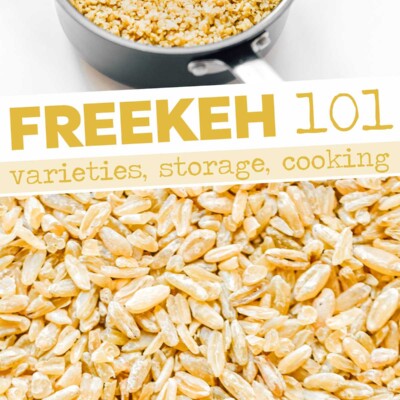
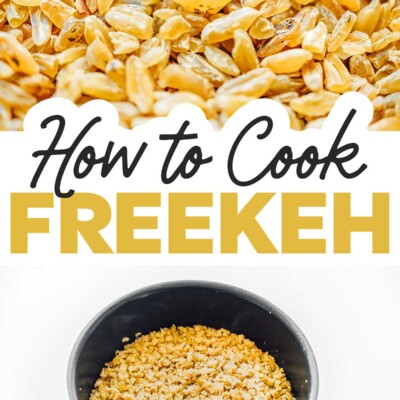
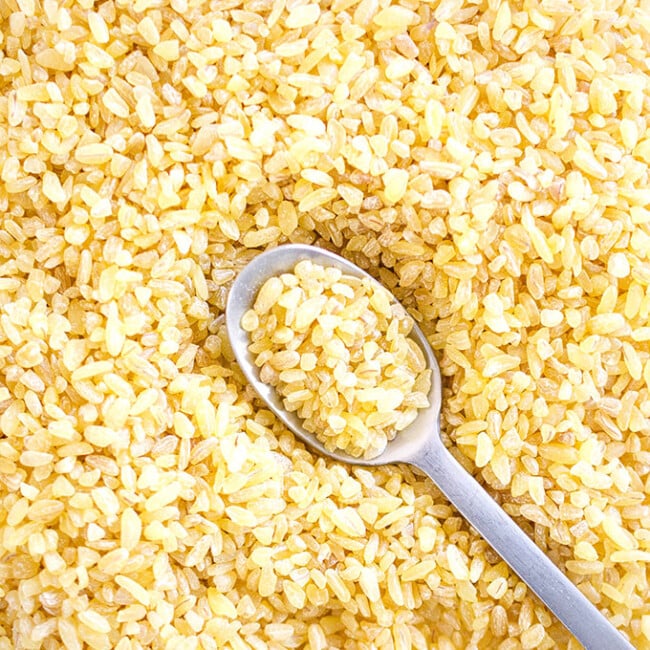
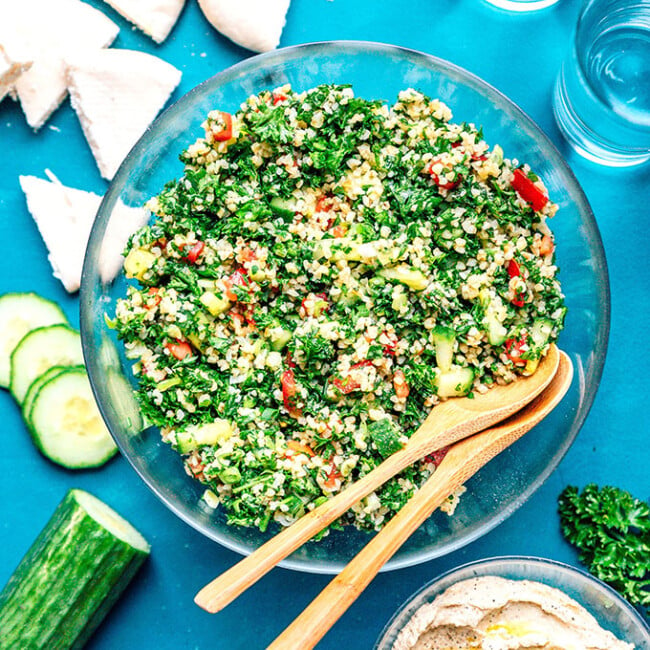
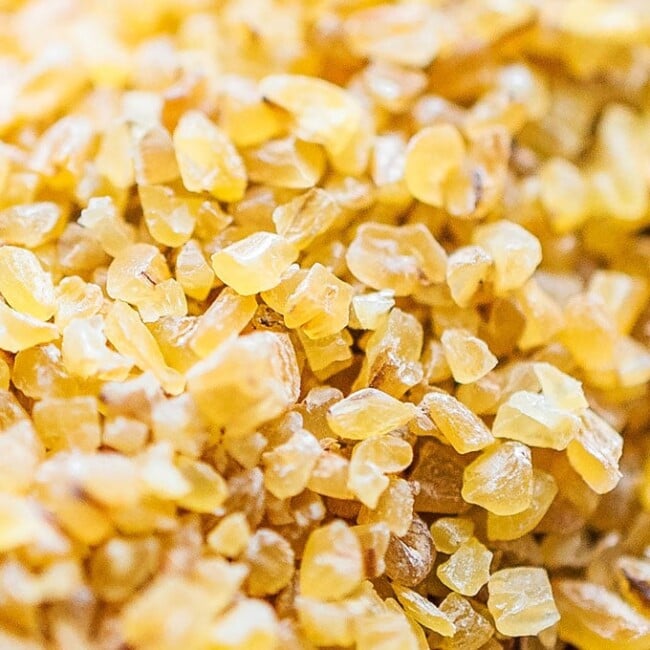
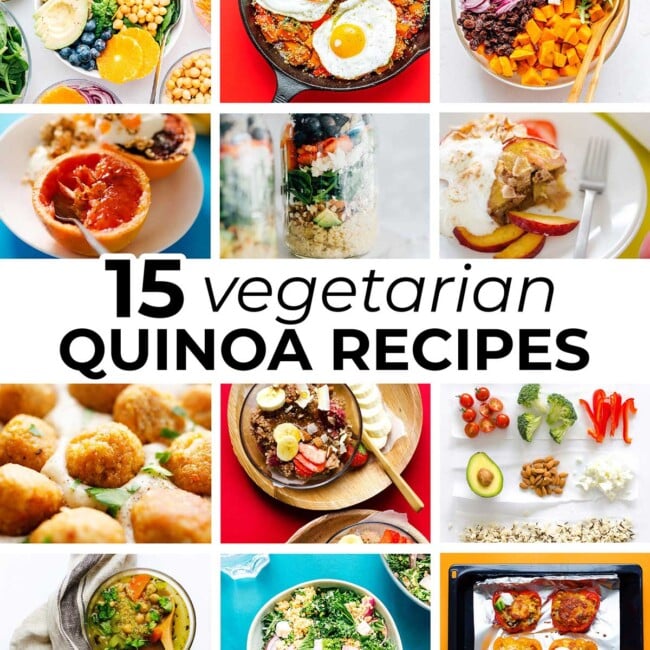
Hjordis says
We cooked freekah for a long time and it was not cooked.
Amanda Pontet says
You may have very old grains, beans are impossible to soften now matter how long you cook them for, when they are really old and dried, maybe the same goes for the freekeh?You can add baking soda to beans to help them to soften. This can alter the nutritional value however, but wouldn’t hurt to experiment as 1tsp of baking soda costs so little compared to wasting all the grains.